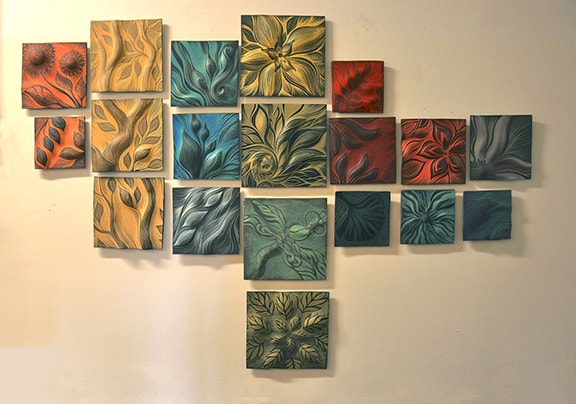Only 16, treat 000 Years!
The word ‘ceramic’ derived from the Greek ‘Keramos’ means ‘potter’ or ‘pottery’. Another view holds that Keramos in turn originated from a Sanskrit root – meaning ‘to burn’. Ceramic tiles have been used for centuries around the world, and the versatile tile still continues to be an essential component in our aesthetic culture and built environment.
While pottery dates back to at least 25,000 BC, archaeologists tell us that tiles were made in Mesopotamia and India around 14,000 BC. Handmade tiles were popular during the Egyptian civilization. Glazes were used extensively in Egypt for murals, Roman baths, to decorate pillars and interiors of homes. Intricate designs were interspersed with semiprecious stone and mirrored glass. In those days clay bricks were sun dried, or baked and the first glazes were blue in colour, made from copper.
The Romans introduced tile making to Western Europe. As communication and transport developed, it became popular in other territories like Persia, Syria and Turkey. Northern Europe acquired this technology from Persia and the Moors brought African tiles with them when they invaded Iberia (Spain).
It was aboard the Spanish ships that decorative tiles found their way to the New World, where they were used primarily to decorate the churches of newly built missions. In the 19th century Britain pioneered mass-produced tiles and soon American tile makers too began to prosper. The floor tiles of Renaissance Italy, the faiences of Antwerp and tile iconography of the Netherlands all celebrated the use of ceramic in art.
Art and architecture became increasingly influenced by the migration of architects, artisans and craftsmen from Iran to Central Asia. The tradition of tiling flourished in Delhi and its environs during the reign of the Lodhi Sultans (1451–1526 CE), initially in shades of blue, and later expanded in a palette of yellow, green, white and turquoise, especially during the reigns of the Mughal Emperors Akbar (1556–1605 CE) and Jahangir (1605–1627 CE). Tiles then were expensive for utilitarian purposes and were found almost exclusively in the homes of the wealthy.
Numerous buildings erected in Delhi were decorated in simple narrow composite bands outlining architectural features, complex geometric mosaic patterns on parapets, chhatris (kiosks), arches, and jharokhas (projecting windows), and in an uncommon instance, on an entire dome—the Nila Gumbad—the Blue Dome. We still have tile mosaics created during the Portuguese rule in Goa, in homes, churches and public spaces, particularly the white and blue azulejos.
A ceramic tile is basically made with white, brown or red clay, fashioned into shapes in wooden moulds. Sand, feldspar quartz and water are mixed and ground in a mill that creates the ‘body slip’. The moisture content in the body slip helps the ingredients to adhere to each other. It is then heated in dryers to reduce the moisture, and baked in kilns that vary in shapes.
A monoculture tile is fired once, while tiles with elaborate designs and prints with glazes are fired many times at temperatures of 2500 degrees Fahrenheit. The higher the temperature, the stronger the tile.
Through the centuries, tile art has undergone a revival. Architects and builders are taking a fresh look at enhancing interiors and exteriors of spaces. There is a vast range in finishes and designs. We have glazed, unglazed, mosaic, glass, marble laminates, granite, slate and vinyl finishes, in innumerable designs.
Tiles are long lasting and low on maintenance. They can function as a multipurpose material for hospitals, kitchen walls and counters, bathrooms, and table tops. You can embellish your compound wall, garden fountains and paths. Clever tiling can make your barbeque counter, gazebo or swimming pool a focal point of decorative interest.
Though tile laying is not rocket science (you can lay them yourself), it’s best to get a professional to do it. Choose colours combinations and designs after proper deliberation. If the finished product does not appeal to the aesthetics of the space, or to your eye, redoing it is an expensive venture.
You could also become a tile collector. As collectibles, tiles are relatively inexpensive. You can specialize in tiles from a particular era, country of origin, colour, subject matter, and manufacturer and then proudly display them framed, or on tables, thus enhancing your décor.




